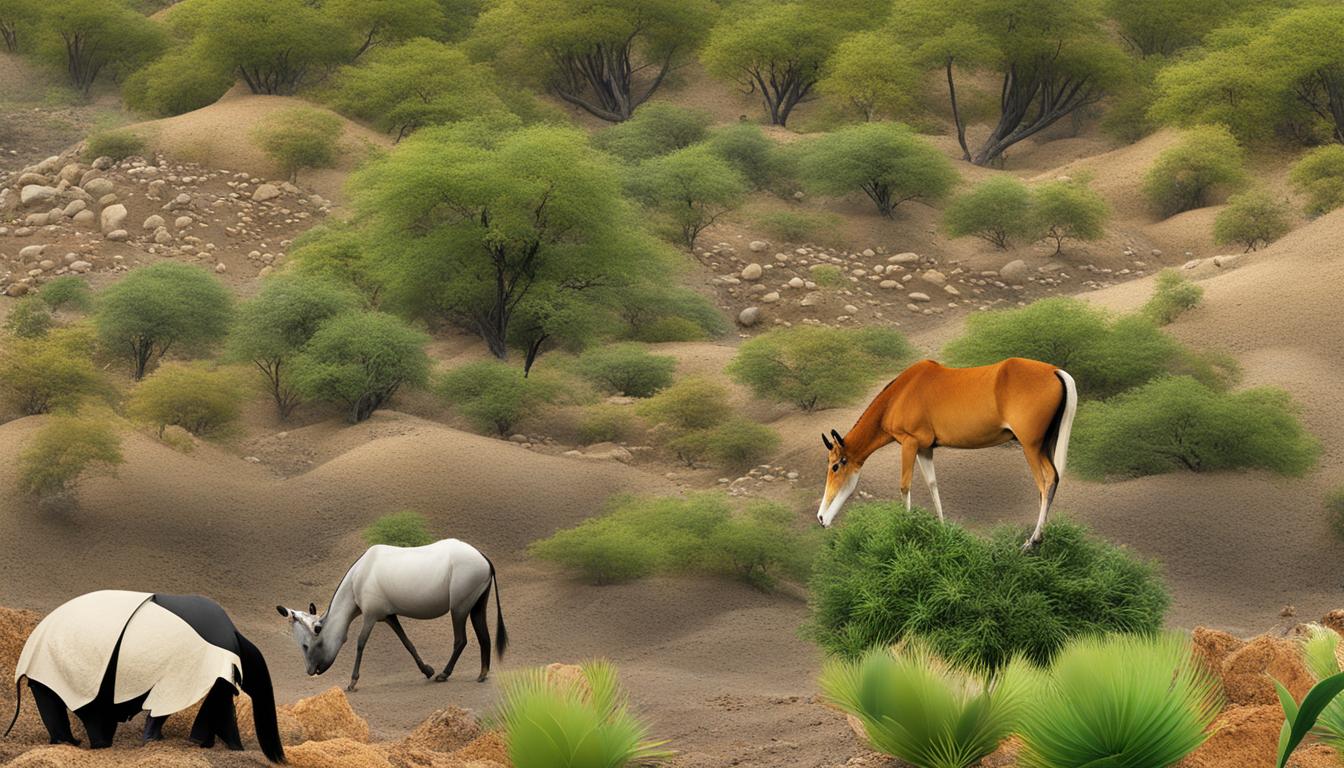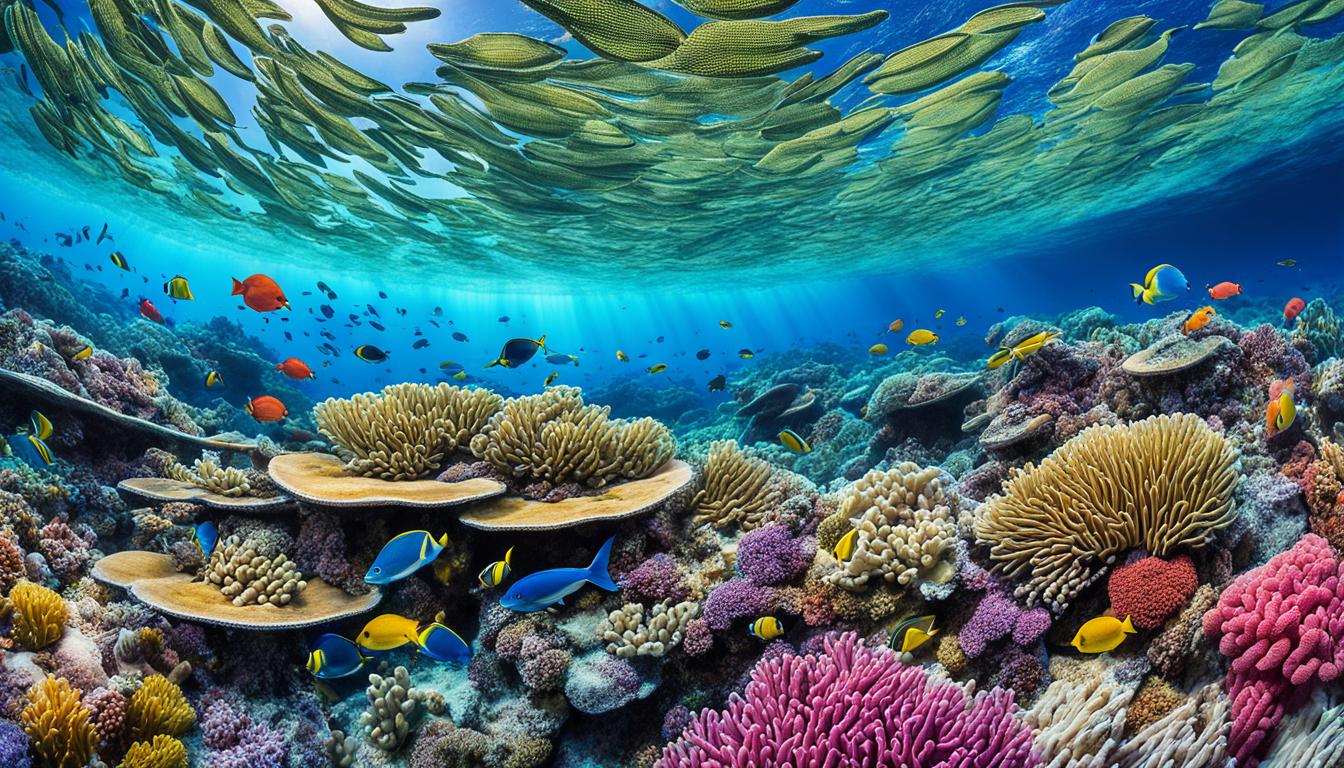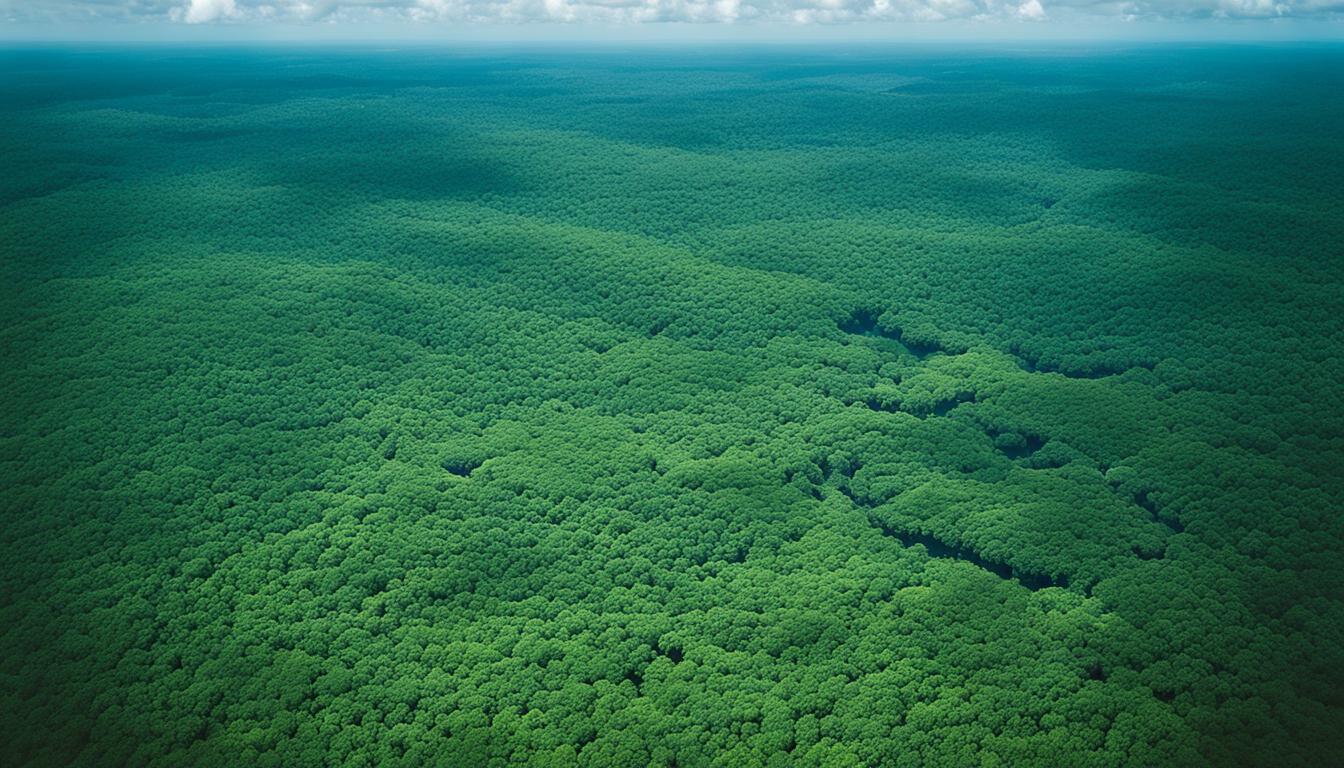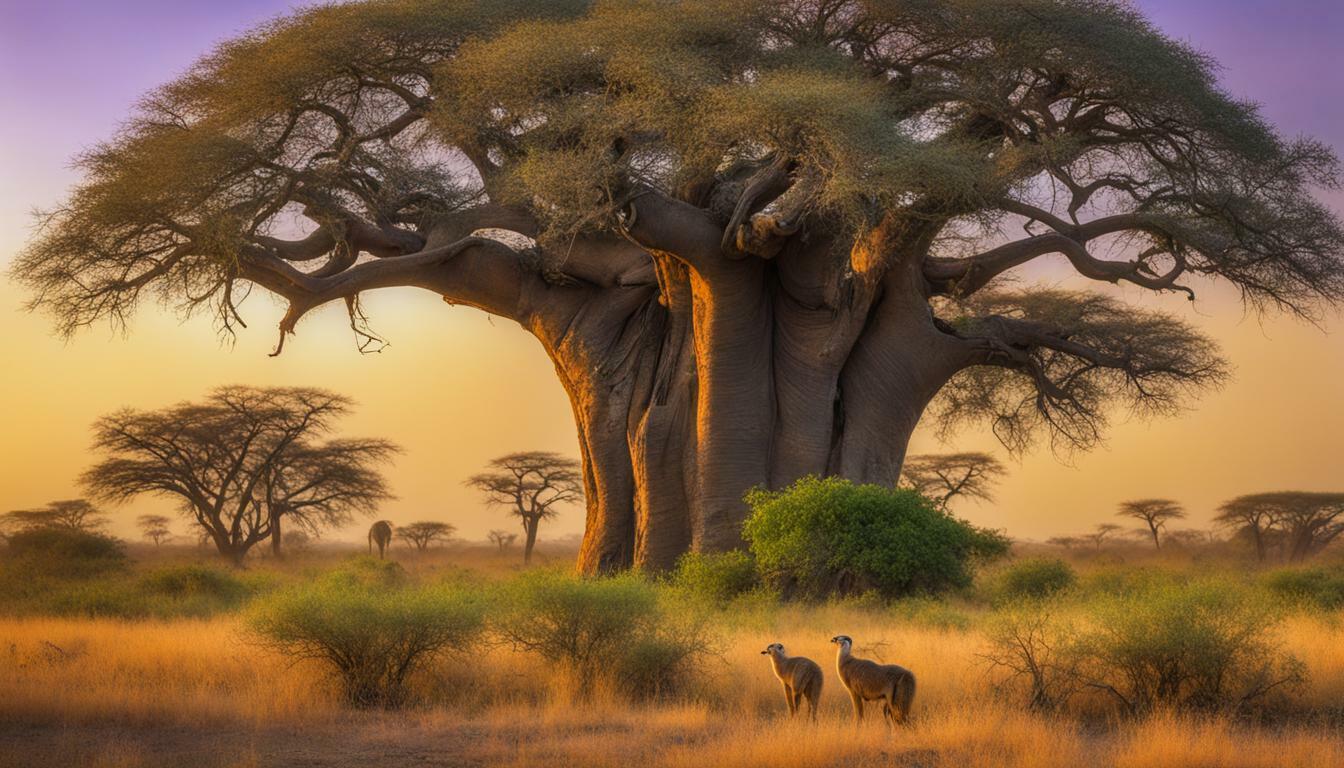Palau Biodiversity: Animal and Plant Species and What Is Under Threat
Palau, located in the western Pacific Ocean, boasts a remarkable biodiversity that encompasses both its marine and terrestrial ecosystems. This small island nation is home to a stunning array of animal and plant species, making it a haven for nature lovers and conservation enthusiasts alike.
In Palau, you will find the greatest area of native forest in Micronesia, with over 1,200 species of plants, of which more than 860 are native. These forests provide a habitat for several endangered plant species, including the critically endangered Ponapea palauensis and the endangered Parkia parvifoliola.
The insect population in Palau is equally diverse, with over 1,200 documented species and an estimated 10,000 terrestrial arthropods. The richness of Palau’s biodiversity extends to its marine environment as well, with over 350 species of hard coral, 200 species of soft coral, and more than 1,300 species of reef fish.
Key Takeaways:
- Palau is home to a rich and diverse array of animal and plant species.
- The country has the greatest area of native forest in Micronesia, with over 1,200 species of plants.
- Palau’s marine biodiversity is exceptional, with over 350 species of hard coral, 200 species of soft coral, and more than 1,300 species of reef fish.
- The biodiversity of Palau is under threat from factors such as climate change, urbanization, and the impacts of El Niño events.
- Efforts to conserve and protect Palau’s biodiversity are essential for the long-term preservation of its unique ecosystems.
Endemic Species of Palau
Palau is a hotspot for endemic species, with many plants, insects, and animals found only in Palau. Ten of its known endemic vascular plant species are categorized as endangered, threatened, or vulnerable. The country is also home to several endemic bird species, with 21 endemics in total. The Palau Megapode, a critically endangered bird, is particularly vulnerable to climate change and typhoons. Palau’s forests and marine ecosystems provide essential habitats for these endemic species, highlighting the importance of conservation efforts.
Marine Biodiversity of Palau
Palau, located in the Coral Triangle, boasts exceptional marine biodiversity, making it a haven for marine enthusiasts and conservationists alike. One of its notable marine treasures is the Rock Island Southern Lagoon, a designated World Heritage Site renowned for its abundant marine life and pristine coral reefs.
With over 400 species of hard corals, 300 species of soft corals, and more than 1,500 species of fish, Palau’s marine ecosystem offers a kaleidoscope of colors and shapes beneath the crystal-clear waters. Its stunning diversity extends to other marine species as well, including seven out of nine giant clam species and numerous invertebrates.

However, the marine biodiversity of Palau has faced significant challenges, particularly in the aftermath of the 1998 El Niño event. This natural phenomenon caused widespread coral bleaching and a decline in sea life, disrupting the delicate balance of Palau’s marine ecosystems.
To protect and restore the marine biodiversity of Palau, ongoing conservation efforts are essential. Collaborative initiatives between government organizations, non-profit groups, and local communities are actively working towards effective management and restoration strategies. These efforts focus on preserving coral reefs, promoting sustainable fishing practices, and raising awareness about the importance of marine conservation.
By safeguarding Palau’s marine ecosystems, we can ensure the long-term viability of its diverse marine species and maintain the ecological integrity of this remarkable underwater world.
Terrestrial Biodiversity of Palau
Palau’s terrestrial biodiversity is a testament to its unique and diverse ecosystems. With approximately 20% of plant species being endemic to the country, Palau showcases a remarkable array of flora and fauna. The forests of Palau provide a sanctuary for numerous species, including the critically endangered Palau tree snail and the rare Palaina albata.
The conservation of these terrestrial ecosystems is crucial for maintaining the ecological balance and protecting the endemic species of Palau.
The islands of Palau also serve as vital habitats for reptiles, amphibians, and mammals, with bat and rat populations thriving. These terrestrial environments contribute to the overall ecological richness and play a significant role in preserving Palau’s biodiversity.
Let’s take a closer look at some of the fascinating species that call these terrestrial habitats home:
| Endemic Plants | Native Birds | Insects |
|---|---|---|
| Micronesian mangrove | Palau fantail | Palauan honey bee |
| Palau cycad | Palau owl | Palau stick insect |
| Ponapea palauensis | Palau flycatcher | Palauan butterfly |
These are just a few examples of the incredible diversity found within Palau’s terrestrial ecosystems. The conservation of these habitats is crucial to protect both the endemic species and the overall ecological balance of the country.

By safeguarding Palau’s terrestrial biodiversity, we can ensure that future generations can continue to marvel at the unique and wondrous landscapes that make Palau such a remarkable destination.
Threats to Palau Biodiversity
Palau’s rich biodiversity is under threat from various factors, including climate change, urbanization, and population growth. As a small island nation, Palau is particularly vulnerable to the ecological disturbances caused by climate change, such as rising sea levels and more frequent and intense tropical typhoons. These events can disrupt delicate ecosystems and threaten the survival of many species.
The development of off-shore petroleum reserves also poses a significant risk to Palau’s biodiversity. Extractive industries can cause pollution, habitat destruction, and disturbances to marine ecosystems. As Palau embraces economic growth, striking a balance between development and conservation is crucial.
Urbanization and land degradation further compound the challenges faced by Palau’s ecosystems. The loss of natural habitats due to urban expansion disrupts the delicate balance of the ecosystem, leading to species displacement and even extinction. It is essential to address these threats through sustainable land-use practices and the protection of critical habitats.

“Preserving Palau’s unique biodiversity in the face of these threats requires urgent action and effective conservation strategies.”
To mitigate these threats and ensure the long-term preservation of Palau’s biodiversity, a comprehensive approach to conservation is needed. This includes:
- Implementing sustainable land-use practices to prevent habitat loss and promote ecosystem resilience.
- Strengthening marine conservation efforts to protect coral reefs and marine species.
- Reducing greenhouse gas emissions to mitigate the impacts of climate change.
- Fostering public awareness and engagement in biodiversity conservation.
“By addressing these threats and embracing sustainable conservation strategies, Palau can protect the biodiversity that makes it so ecologically valuable.”
Conservation Efforts in Palau
Palau, a biodiverse nation, has implemented a range of conservation measures to safeguard its natural heritage. These efforts are crucial to protect the unique flora and fauna that call Palau home. The country has established the Palau Protected Areas Network (PAN), a comprehensive system that supports the management of protected areas at the local level.
One remarkable regional initiative that recognizes and supports Palau’s conservation efforts is the Micronesia Challenge. This collaborative effort brings together governments, organizations, and communities across Micronesia to conserve at least 30% of the region’s marine and 20% of its terrestrial resources by 2020.
In addition to these broader initiatives, Palau has designated specific marine protected areas and fully closed areas to enhance the protection of its marine ecosystems. These conservation areas play a crucial role in maintaining biodiversity and preserving delicate marine habitats.
However, the conservation of Palau’s biodiversity would not be possible without active community involvement. Local communities actively participate in the management and protection of natural resources, ensuring the sustainable use and preservation of Palau’s biodiversity.
To illustrate the conservation efforts in Palau, here is a table highlighting the protected areas and their significance:
| Protected Area | Description |
|---|---|
| Rock Island Southern Lagoon | A World Heritage Site recognized for its high levels of marine biodiversity. The lagoon is home to numerous coral species, fish, and other marine organisms. |
| Koror State Marine Reserve | Located in the eastern part of Palau, this reserve protects a diverse range of marine habitats, including coral reefs and seagrass beds. |
| Helen Reef | An isolated Atoll in the southwest of Palau, Helen Reef is a critical area for the conservation of various marine species, including sharks, rays, and sea turtles. |

Community involvement and protected areas are key components of Palau’s conservation efforts. Through these initiatives, Palau aims to not only preserve its biodiversity but also promote sustainable practices that will benefit future generations.
The Role of Palauan Culture in Biodiversity Conservation
Palauan culture holds a deep connection to biodiversity and plays a crucial role in the conservation efforts of this breathtaking archipelago. Through generations, traditional knowledge and practices have been passed down, with species having traditional names and being intricately woven into legends and cherished traditions. The Palauan ethos of omengereomel, meaning conservation, guides the harmonious relationship between Palauans and their natural surroundings.
Embedded within Palauan culture are traditional practices that actively contribute to the sustainability of ecosystems. For instance, the use of taro patches, known as kebai, serves not only as a source of sustenance but also as a vital means to preserve the integrity of nearby reefs. By filtering nutrient-rich water and reducing sedimentation, these patches help maintain the health and resilience of coral communities. Such practices are a testament to the wisdom and foresight of Palauan culture.
Furthermore, Palauans fully embrace the concept of community-based conservation, recognizing that collective efforts are essential for the protection of their declining species. Local chiefs, or Bai, play a crucial role in implementing harvest moratoriums, ensuring the recovery of vulnerable populations and safeguarding the delicate balance of ecosystems. By adhering to these traditional practices, Palauans actively engage in the sustainable management of their biodiversity.

“Palauan culture and its integration into conservation strategies contribute to the sustainable management of Palau’s biodiversity.”
Preserving Palauan culture is not only a matter of heritage but also a key component in biodiversity conservation strategies. By recognizing the value of traditional practices, Palau is able to blend environmental stewardship with cultural pride, resulting in more effective strategies for long-term conservation. The seamless integration of Palauan culture into conservation efforts ensures the preservation of both the natural wonders and the cultural heritage that define this unique nation.
Sustainable Tourism and Biodiversity Conservation in Palau
Palau recognizes the importance of sustainable tourism in biodiversity conservation. The country has adopted a low-impact, nature-positive approach to tourism through its Responsible Tourism Policy Framework. Regulations banning reef-toxic sunscreens and single-use plastics have been implemented in fragile areas.
Palau’s commitment to carbon-free tourism and being a Carbon Neutral Destination further demonstrates its dedication to environmental conservation. Sustainable tourism practices not only protect Palau’s biodiversity but also contribute to the country’s economy. Tourism accounts for a significant portion of Palau’s GDP, providing income for conservation efforts, and promoting conservation-awareness among visitors.
By engaging in sustainable tourism, visitors have the opportunity to experience the stunning natural beauty of Palau while actively participating in its preservation.

Carbon Storage and Conservation in Palau
Palau’s ecosystems, particularly mangroves and forests, play a crucial role in carbon storage. Mangroves have been found to store twice as much carbon per hectare as tropical upland forests in Brazil. They account for 24% of Palau’s total carbon stock. Terrestrial forests also contribute to carbon storage, with ongoing efforts to rehabilitate and increase forest cover on the island of Babeldaob.
Protecting these carbon-rich habitats is essential for mitigating climate change and preserving Palau’s biodiversity. By safeguarding mangroves and forests, Palau can help reduce carbon emissions and promote natural carbon sequestration. Conserving these vital ecosystems not only benefits the environment but also contributes to sustainable development and the well-being of local communities.

Carbon Storage in Mangroves and Forests
| Ecosystem | Carbon Storage |
|---|---|
| Mangroves | Twice as much carbon per hectare as tropical upland forests in Brazil |
| Terrestrial Forests | Contribute to overall carbon storage in Palau |
Mangroves not only provide carbon storage but also offer additional benefits to the environment. They serve as crucial nurseries for marine species, protect coastal areas from erosion and storm damage, and improve water quality by filtering pollutants. Terrestrial forests, on the other hand, provide essential habitat for numerous species, maintain soil quality, and regulate water flow.
The conservation and restoration of these ecosystems are integral to Palau’s commitment to sustainable development and climate change mitigation. By prioritizing carbon storage and implementing effective conservation strategies, Palau can foster resilience in the face of environmental challenges and ensure a thriving future for both its people and its natural heritage.
Challenges and Future Directions for Palau’s Biodiversity Conservation
Palau has made significant progress in the conservation of its unique biodiversity. However, there are still several challenges that need to be addressed to ensure the long-term preservation of its natural heritage.
Habitat loss poses a major threat to Palau’s biodiversity. The expansion of urban areas and the conversion of natural habitats into agricultural or industrial land have resulted in the loss of critical ecosystems that support a wide range of species.
Climate change is another pressing challenge. Rising temperatures and sea levels, as well as the increased frequency and intensity of extreme weather events, can have devastating impacts on Palau’s ecosystems. Coral bleaching events caused by warmer waters have already caused significant damage to the country’s vibrant coral reefs.
Addressing data gaps is also essential for effective conservation strategies. Accurate and up-to-date data on species distribution, population sizes, and the status of ecosystems is crucial for making informed decisions and setting conservation priorities.
To overcome these challenges, it is crucial to strengthen conservation efforts. This includes expanding protected areas, implementing sustainable land-use practices, and enhancing the enforcement of environmental regulations.
Improving monitoring and research is vital for understanding the impacts of human activities and climate change on Palau’s biodiversity. By studying the ecological processes and species dynamics, researchers can provide valuable insights for conservation planning and management.
Developing comprehensive management plans is necessary to guide conservation actions and effectively allocate resources. These plans should integrate scientific knowledge, traditional ecological knowledge, and input from local communities to ensure their effectiveness and sustainability.
Collaboration between government agencies, local communities, and international organizations is key to achieving long-term conservation goals. By working together, stakeholders can pool their resources, share knowledge and expertise, and develop innovative solutions to protect Palau’s biodiversity.
By addressing these challenges and implementing effective conservation strategies, Palau can secure a sustainable future for its unique biodiversity. Preserving the country’s natural heritage is not only important for the well-being of its ecosystems but also for the cultural and economic sustainability of Palau and its people.
Conclusion
Palau’s biodiversity is a treasure that deserves our utmost protection and conservation efforts. The country’s marine and terrestrial ecosystems harbor a remarkable wealth of species, including numerous endemic plants, animals, and insects. Palau’s unique cultural connection with nature further accentuates the importance of preserving its natural heritage.
However, the challenges facing Palau’s biodiversity are significant. Climate change poses a major threat, impacting both terrestrial and marine habitats. The loss of habitat due to urbanization and land degradation further exacerbates the delicate balance of ecosystems. Additionally, the need for comprehensive data and research hinders the development of effective conservation strategies.
Despite these challenges, Palau is taking important steps towards sustainability and conservation. By implementing sustainable practices, including responsible tourism and protected areas, Palau aims to safeguard its diverse ecosystems. Engaging local communities and integrating traditional knowledge and practices into conservation efforts adds strength to these initiatives.
Preserving Palau’s biodiversity is not only a responsibility but also a testament to the vital interdependence between humans and the natural world. By nurturing and protecting its unique biodiversity, Palau can continue to provide a home for countless species and maintain its status as a global leader in biodiversity conservation.
FAQ
What is the biodiversity in Palau like?
Palau is home to a rich and diverse array of animal and plant species. It has the greatest area of native forest in Micronesia, with over 1,200 species of plants, of which more than 860 are native. Palau also boasts a rich marine biodiversity, with over 350 species of hard coral, 200 species of soft coral, and more than 1,300 species of reef fish.
What are the threats to Palau’s biodiversity?
Palau’s biodiversity is under threat from factors such as climate change, urbanization, and the impacts of El Niño events. Rising sea levels and increased frequency and intensity of tropical typhoons pose significant challenges. Development projects, including off-shore petroleum reserves, also threaten Palau’s biodiversity. The loss of habitat due to urbanization and land degradation further exacerbates the challenges faced by Palau’s ecosystems.
What conservation efforts are being made in Palau?
Palau has implemented various conservation measures to protect its biodiversity. The country has established the Palau Protected Areas Network (PAN) and designated marine protected areas to safeguard its marine ecosystems. The Micronesia Challenge supports Palau’s efforts in marine conservation. Community involvement plays a crucial role, with local communities actively participating in the management and protection of natural resources.
How does Palauan culture contribute to biodiversity conservation?
Palauan culture has a deep connection to biodiversity and plays a significant role in conservation efforts. Traditional practices, such as the use of taro patches to preserve reefs, are still carried out. Palauans embrace the concept of community-based conservation, with local chiefs implementing harvest moratoriums. The preservation of Palauan culture and its integration into conservation strategies contribute to the sustainable management of Palau’s biodiversity.
How does sustainable tourism contribute to biodiversity conservation in Palau?
Palau recognizes the importance of sustainable tourism in biodiversity conservation. Through its Responsible Tourism Policy Framework, Palau has implemented regulations banning reef-toxic sunscreens and single-use plastics in fragile areas. Sustainable tourism practices not only protect Palau’s biodiversity but also contribute to the country’s economy. Tourism accounts for a significant portion of Palau’s GDP, providing income for conservation efforts, and promoting conservation-awareness among visitors.
What is the role of carbon storage in Palau’s conservation efforts?
Palau’s ecosystems, particularly mangroves and forests, play a crucial role in carbon storage. Mangroves store twice as much carbon per hectare as tropical upland forests in Brazil. They account for 24% of Palau’s total carbon stock. Terrestrial forests also contribute to carbon storage, with ongoing efforts to rehabilitate and increase forest cover on the island of Babeldaob. Protecting these carbon-rich habitats is essential for mitigating climate change and preserving Palau’s biodiversity.
What are the challenges and future directions for biodiversity conservation in Palau?
Palau still faces challenges in biodiversity conservation, including habitat loss, climate change, and the need for greater data and research. Strengthening conservation efforts, improving monitoring and research, and developing comprehensive management plans are essential for the future of Palau’s biodiversity. Collaboration between government agencies, local communities, and international organizations is crucial for achieving long-term conservation goals.







